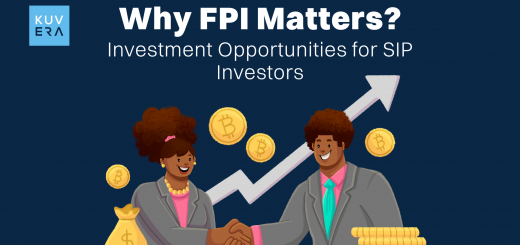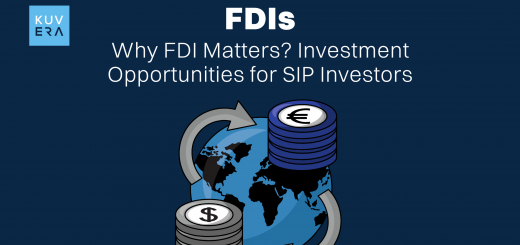A large proportion of the Indian population belongs to the middle-class income bracket. As a result, during budget announcements, the government’s initiatives and policies tend to revolve around this income bracket. For middle-class families in India, there are numerous investment schemes available. But not all investment products are suitable for all investors. Every investor has different goals, levels of risk tolerance, and financial situations. Investment plan must be made with a specific objective in mind, which may be to generate wealth for present or future needs.
Another element that must be taken into account when investing is a risk. Investment plan & decisions are heavily influenced by your perception of risk. One can either be risk-loving or risk-averse, or one can be moderate and fall somewhere in between. Depending on the group they fit into, one can make investing decisions.
Best Investment Plan for Mid-Income Families with Risk Averse
A risk-averse individual would be very sensitive to changes in the market. They may start to doubt their investing decisions even if the market just experiences a minor drop. Therefore, investing in investments with assured returns is appropriate for them. The investments listed below are ones some individuals may want to consider if they believe they fit this description.
-
Public Provident Fund (PPF):
PPF, or public provident fund, is a well-known investment plan due to the numerous features that cater to investors and the benefits that are associated with it. It is a long-term investing plan that is well-liked by people who seek to generate substantial yet consistent returns.
A public provident fund is appropriate for people who have a low-risk tolerance. Because this plan is regulated by the government, it is backed up with guaranteed returns to protect the financial needs of the Indian people. Additionally, the invested money in the PPF account is not market-linked either. Investors can diversify their financial and investment portfolios by adopting the public provident fund scheme.
A PPF account has a 15-year investment lock-in period prior to which funds cannot be fully withdrawn. After the lock-in period is over, an investor may decide to extend this tenure by an additional 5 years if desired. A minimum of 500 rupees and a maximum of 1.5 lakh rupees can be invested annually in a provident fund plan. This investment can be made in a single lump sum or in instalments. Each year, contributions must be made to a PPF account in order to keep it active.
-
National Savings Certificate (NSC):
The National Savings Certificate is a government scheme with a tenure of 5 years. The scheme offers an annual interest rate of 6.8%. The National Savings Certificate is a fixed-income investment scheme offered by the Government of India that is easy to open at any post office. It is a savings bond scheme that entices participants, who are mainly low- to middle-income investors, to invest while reducing their income tax liability under Section 80C.
It only has a five-year minimum maturity period. The maturity period for bank fixed deposit plans that save on taxes is likewise five years. NSCs, however, are preferable to term deposits or fixed deposit products that save on taxes because of the interest rates and the government’s backing. Due to its modest exposure to riskier instruments and government backing, this investment provides interest that is guaranteed.
-
Fixed Deposit
Fixed deposits, also known as FDs, are one of the most popular investment instruments that most banks provide to their clients. Due to its safety compared to equity investments, it is a popular form of investment. It is a risk-free investment if people wish to avoid risk. Also, it can help people reach long-term financial goals like saving for retirement, buying a home, or paying for a child’s college.
A fixed deposit is when investors deposit a lump sum of money into a bank account for a set amount of time at a set interest rate. When the term of the fixed deposit is up, investors receive the money that was initially put down plus compound interest. Fixed deposits are the most prevalent and conventional kind of investment. FDs are usually issued by all banks and are quite secure. The interest rate varies from bank to bank, but it is usually between 3% and 7% per year. Given that they have a duration ranging from 7 days to 10 years, they are both short-term and long-term investment products.
Despite the fact that the aforementioned assets are extremely secure, their profits drop in comparison to market-linked investments. Moreover, the real return (return after inflation) from these investments is generally very low.
Best Investment Plan For Mid Income Families With Risk Takers
A risk-taker is willing to accept more risk in exchange for a higher return. They are more patient with market fluctuations and take their time responding to them. As a result, their investment in market-linked investments is more profitable. The following are some investment options for anyone if they believe they fit into this group.
-
Equity funds
A mutual fund that primarily invests in equity stocks is called an equity fund. According to SEBI, an equity fund in India is a plan that invests at least 65% of its assets in equities and equity-related products. Compared to debt and hybrid funds, equity mutual funds are riskier. But compared to debt and hybrid funds, they generally offer a larger return. Market movements have an impact on the funds.
Best-equity mutual funds may be managed actively or passively. Based on market capitalization, investment style, and investment region, equity mutual funds can be divided into categories. They can be classified as large-cap funds, mid-cap funds, small-cap funds, or multi-cap funds, depending on the market capitalization. Sector-specific equity funds, which invest in particular industries like banking or FMCG, are another subcategory of equity funds. There are also international funds that invest in the stocks of foreign companies. Equity-linked savings schemes also fall under the category of equity mutual funds. An equity mutual fund is created by fund managers by pooling money from numerous investors. The management of equity mutual funds can be active or passive. When investing in actively managed funds, the fund managers choose the stocks for the portfolio after conducting comprehensive market research.
-
Hybrid funds
Investments made by hybrid funds are made in both equity and debt instruments. This mixture is intended to diversify the funds, risks, and returns. Equity mutual funds make investments in the stocks and shares of other companies. When compared to debt mutual funds, it has a higher potential return but also a higher risk. Debt mutual funds invest in corporate bonds, Treasury bills, and other debt instruments. It is generally low-risk and provides a consistent income to the investor. Each mutual fund has advantages and disadvantages of its own. Depending on the investors’ investment objectives, hybrid funds combine both types of funds and seek to generate higher returns while posing a lower risk. Investors who want high returns with low risk should look into hybrid mutual funds. Investors seeking high returns at low risk may explore these funds.
Equity mutual fund schemes typically offer higher returns at a higher risk, making them ideal for investors willing to accept capital risk in exchange for long-term inflation-beating returns. Debt mutual fund schemes are perfect for investors who don’t want to accept more risk or lower returns because they generally give a lower return with lower risk. Hybrid mutual funds provide a blend of risk and return while combining the risk and return that the funds themselves offer. Asset allocation, portfolio diversification, and risk management are all part of the fund management process. It may be perfect for investors who want to balance risk and profit because of this.
The above investments are highly volatile and do not guarantee returns.
Best Investment Plan For Mid Income Families With Moderate Risk Tolerance
If an investor doesn’t fit into any of the above categories, they may be willing to take on moderate risk. Here are a few of the investment alternatives they can explore
-
National Pension Scheme (NPS)
The National Pension System (NPS) is a voluntary, defined contribution retirement savings plan created to help members make the best choices for their futures through methodical saving throughout their professional lifetime. The NPS aims to help individuals develop the habit of saving for their retirement. It is an attempt to find a long-term way to make sure that every Indian person has enough money to live on when they retire.
The National Pension Scheme (NPS) pools individual savings into a pension fund, which is then invested by PFRDA-regulated professional fund managers in accordance with approved investment guidelines in diversified portfolios that include shares, corporate debt obligations, government bonds, and bills. Depending on the profits received on the investments placed, these contributions would increase and accrue over time.
Subscribers may use the accumulated pension wealth under the scheme to acquire a life annuity from a PFRDA-empanelled life insurance company at the time of their normal exit from the scheme, in addition to withdrawing a portion of the accumulated pension wealth as a lump sum if they wish. Section 80C of the Income Tax Act allows for the tax exemption of contributions made to the NPS scheme up to a maximum of Rs. 1.5 lakhs.
-
Debt Funds
A debt mutual fund is a mutual fund scheme that invests in fixed income-producing products with lower risk and volatility, such as certificates of deposit, corporate bonds, Treasury bills, and government securities. Debt mutual funds are sometimes known as bond funds or fixed-income bonds. The main goal of this fund is to give consistent and fixed interest during the time the money is invested.
A debt mutual fund chooses its assets depending on its credit rating. A better credit rating increases the likelihood that the investment will be repaid in full when it matures and that the interest will be paid on time. Debt mutual funds are usually good for investors who want to make a steady, guaranteed income in a short amount of time with little to no risk.
Best Investment Plan for Mid-Income Senior Citizens
The best way to invest the money is to protect it while generating a steady stream of guaranteed income. No matter if they are middle class or not, the following investment initiatives are offered in India for senior citizens:
-
Senior Citizens Savings Scheme (SCSS)
Senior Citizen Savings Scheme, or SCSS for short, is a government-sponsored savings program for people over 60. This scheme was launched by the Indian government in 2004 with the goal of giving senior citizens a reliable and secure source of income during their post-retirement years. It is one of India’s most profitable savings plans and provides its members with comparably sizable returns. Additionally, because it is a government-backed scheme, there is very little chance of suffering a capital loss. People can apply for SCSS at post offices, public banks, and private banks.
-
Post Office Monthly Income Scheme (POMIS)
The Post Office Depository Service offers a wide range of investment opportunities with set returns. These programs are all tied to the advantage of the sovereign guarantee, meaning that this investment option is backed by the government. Because of this, these schemes are generally safer ways to invest than stocks and many fixed-income options.
-
Senior Citizen FDs
One of the best investment options for people over 60 is Senior Citizen Fixed Deposits (FDs). Leading banks are providing these term deposit options at special FD interest rates. The benefits of FDs include consistent returns, loans, and tax savings. Investing in a Senior Citizen Fixed Deposit allows individuals to enjoy their post-retirement years without worry. Senior Citizen FD rates are typically 0.25 to 0.65 % higher than regular FD rates.
Conclusion
The following considerations must be made while choosing the ideal investment for middle-class investors:
- Investment Objective: Clarify what you want to achieve. It may be acquiring a car, constructing a home, or making your first crore. Make a list of all your goals and rank them in order of significance and when you want to reach them if you have multiple objectives.
- Investment Duration: Define your goals depending on the investment tenure when you’ve determined what they are. Define each objective, for instance, as either a short-term or long-term objective. A short-term goal is one that lasts for less than five years, and a long-term goal is one that lasts for more than five years.
- Risk: Take a risk profiling questionnaire to determine your level of risk tolerance, or consult a licenced and trained financial advisor. You can select among the aforementioned investments based on the results.
- Use a financial advisor’s assistance when creating your financial strategy.
- Learn about several financial products before selecting the best investment.
- For diversification, spread your investments among several asset groups.
- Avoid following the crowd and only invest in things that are beneficial for you.
Interested in how we think about the markets?
Read more: Zen And The Art Of Investing
Watch our debt mutual fund series on Youtube where we explain all 16 different types of debt mutual funds.
Start investing through a platform that brings goal planning and investing to your fingertips. Visit kuvera.in to discover Direct Plans and Fixed Deposits and start investing today.
#MutualFundSahiHai #KuveraSabseSahiHai #PersonalFinance #InvestorEducation;











